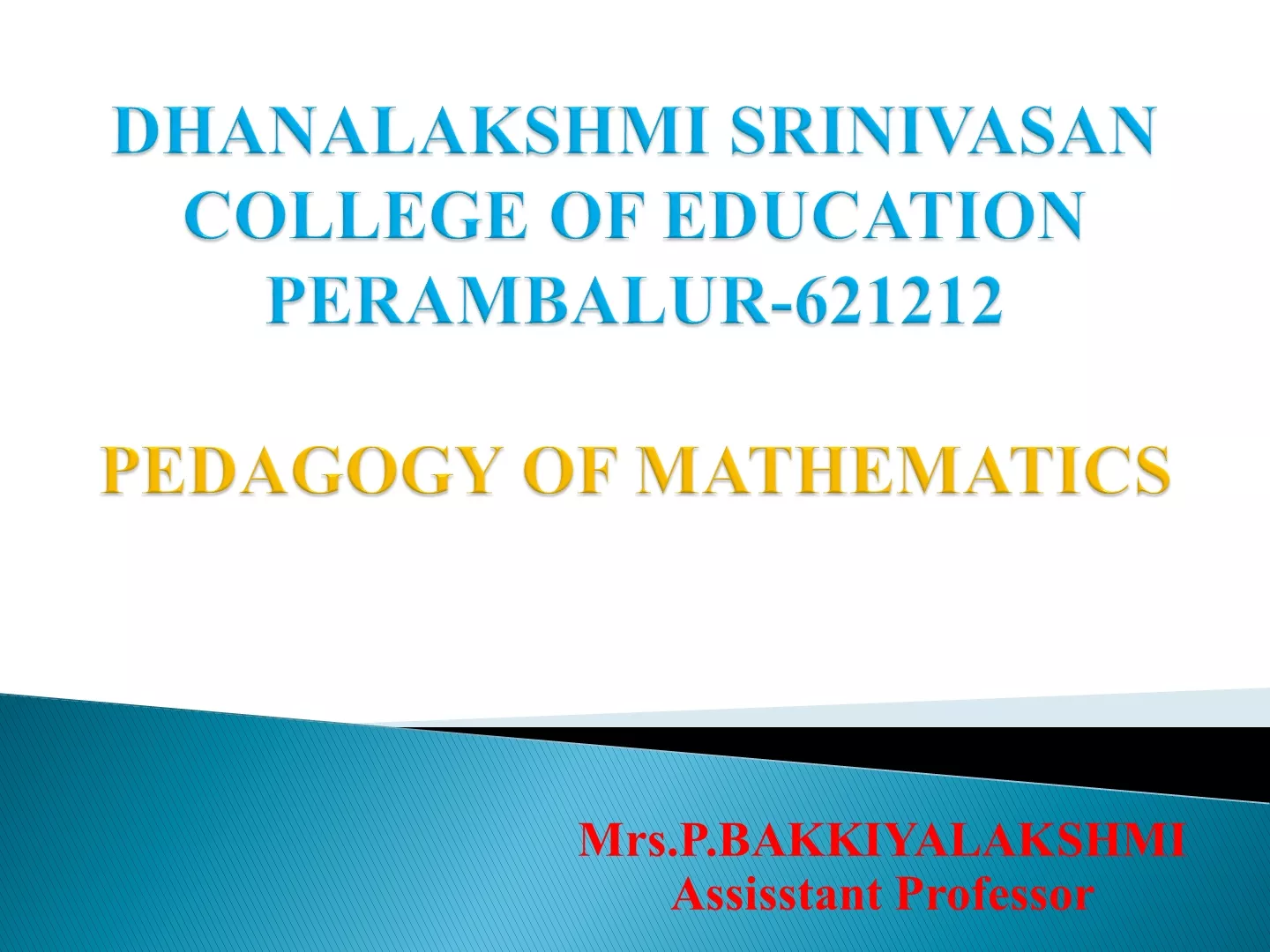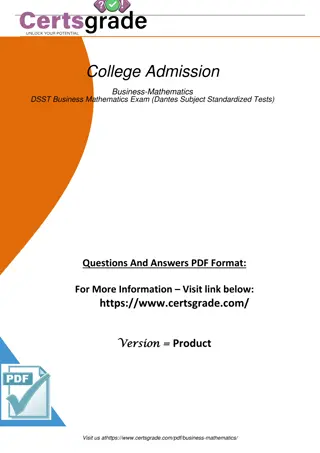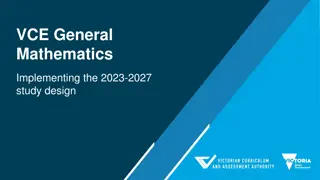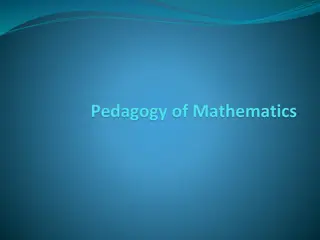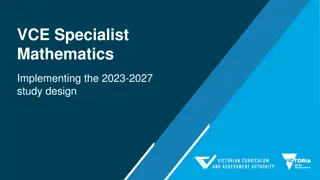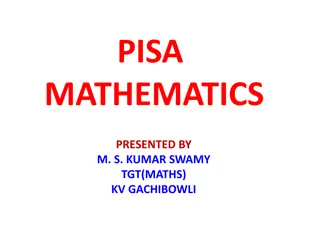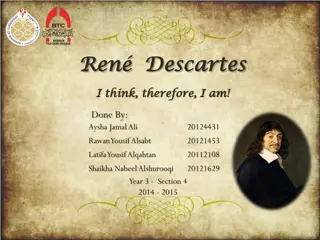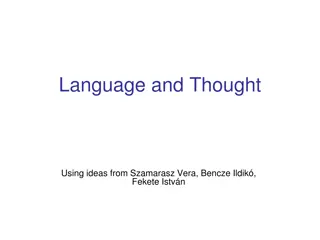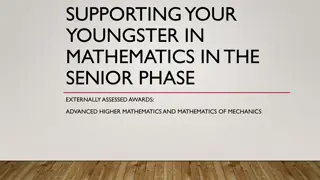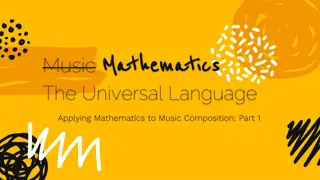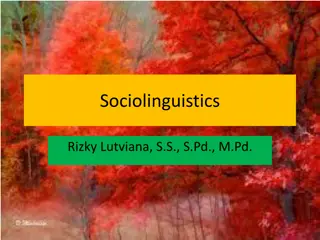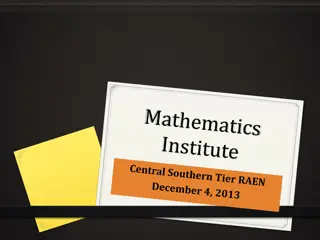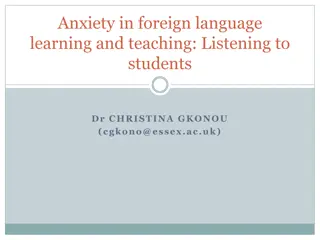Language Influence on Mathematics: Exploring the Connection
Language plays a crucial role in shaping our understanding of mathematics. Starting with the foundation laid by our first language, we delve into how linguistic structures impact mathematical concepts like numbers, addition, and multiplication. By examining the grammar embedded in various languages, we uncover fascinating insights into the intersection of language and mathematics, shedding light on how diverse linguistic rules influence mathematical thinking and problem-solving strategies.
Download Presentation

Please find below an Image/Link to download the presentation.
The content on the website is provided AS IS for your information and personal use only. It may not be sold, licensed, or shared on other websites without obtaining consent from the author.If you encounter any issues during the download, it is possible that the publisher has removed the file from their server.
You are allowed to download the files provided on this website for personal or commercial use, subject to the condition that they are used lawfully. All files are the property of their respective owners.
The content on the website is provided AS IS for your information and personal use only. It may not be sold, licensed, or shared on other websites without obtaining consent from the author.
E N D
Presentation Transcript
Language and mathematics Dick Hudson Godolphin and Latymer School September 2016 1
My main messages You started to learn maths when you learned your first language. So language provides the folk foundations for maths. The folk foundations are better than none. But they re also misleading. So the better you understand them, the better for your maths. And in any case, they re interesting. 2
Plan 1. Grammar helps: Numbers 2. Grammar hinders: Bases 3. Grammar helps: Folk algebra in language 4. Grammar fun: Danish numbers 3
1. Grammar helps: Numbers All numbers have three different meanings: Serial: 1, then 2, then 3, ..... This is how small children learn numbers e.g. dates, house numbers: My house number is 3. Quantity: 2 = 1+1, 3 = 2+1, ... This is the stuff of maths e.g. 3 x 4 = 12 Sets: two = a set with 2 members, ... This is the stuff of counting e.g. I have three pencils 4
The linguistics of numbers Some languages have no numbers at all! So mathematics is impossible. English has: simple one-word numbers: one, two, three, .... complex many-word numbers: one hundred and twenty-three most languages are like this. 5
The grammar of complex numbers and = + (a hundred and three) number1 before number2: if number1 < number2, then = number1 x number2 (three hundred) otherwise, = number1 + number2 (twenty three) So twenty-three thousand, six hundred and fifty seven = (20 + 3) x 1,000 + 6 x 100 + 5 x 10 + 7 = 23,657 But the rules used to be different: five and twenty so + is always and no need for <, > And German still has five and twenty! 6
So what? When we learned to count, we learned about addition multiplication <, > This is part of the folk mathematics built into our language. But the rules vary between languages, like the rest of grammar. eg in Latin, 18 = duo-de-viginti( two from twenty ) NB So Latin grammar includes subtraction. 7
2. Grammar hinders: bases The grammar restricts multiplication to a few multipliables : English: dozen, score, hundred, thousand, million, ... three dozen/score/hundred/thousand/million ... But noneof these is the base for complex numbers! For a learner, the base isn t obvious from the grammar. As it would be if we said three ten and four for 34. In fact, the grammar makes the base really hard to find: thirty is an irregular replacement for three ten maybe the base is the multipliable that s grammatically irregular? 8
Is the base the only irregular irregular multipliable? No Our base could be 12 because eleven and twelve are super-irregular. Our base could be 20 because thirteen, fourteen, fifteen, ... nineteen are irregular. Many languages have base 20 (or remnants thereof) e.g. French quatre-vingts = 4 x 20 = 80 One language has base 15!!! 9
So what? Many different multipliables are available. They re all grammatically collective nouns : dozens/scores of ..., like groups/crowds/herds of ... Just one of these is the base, used in building complex numbers. But for young learners, the base is hidden by the grammar because it doesn t even appear to be a multipliable three hundred/thousand but three ten thirty 10
unknown same 3. Folk algebra in language Algebra uses letters to show unknown quantities and sameness eg1. x + 2 = 5 eg2. x2 + y2 = 2x + 3y Both x s have the same unknown value, and likewise for both y s. Grammar too shows unknown and sameness : Who hurt himself? who is unknown, but himself must = who . And a ... the ... e.g. Once upon a time, there was a king .... the king ..... 11
Factorising in grammar Algebra: 2x + 2y = 2 (x + y) When adding two expressions A + B, extract any common factor F from A, B, leaving A , B bracket the remainder: (A + B ) apply the common factor to the remainder: F (A + B ). Grammar: She came home and she went to bed. = She (came home and went to bed) 12
Unknowns and factorising But in grammar, A(B+C) may have a different meaning from (AB + AC). 1. Who (has red hair and owns a bicycle)? 2. Who has red hair and who owns a bicycle? This distinction is possible because each who names a different unknown. 1. X (has red hair + owns a bicycle) 2. X has red hair + Y owns a bicycle. Grammar teaches factorising even to small children. 13
Psychology So what? Biology Mathematics is the queen of the sciences. Chemistry But grammar is the queen of mathematics. Physics Mathematics Grammar 14
subtraction! 4. Danish numbers: a puzzle half a score less than seven and half three score 93 = ? Welcome to the UK Linguistics Olympiad! 15
So what? Grammar lays the folk foundations for mathematics. Different languages lay different foundations. Maths teaching has to start from the folk foundations. But mathematics has to rise above them. Grammar is interesting. 16


